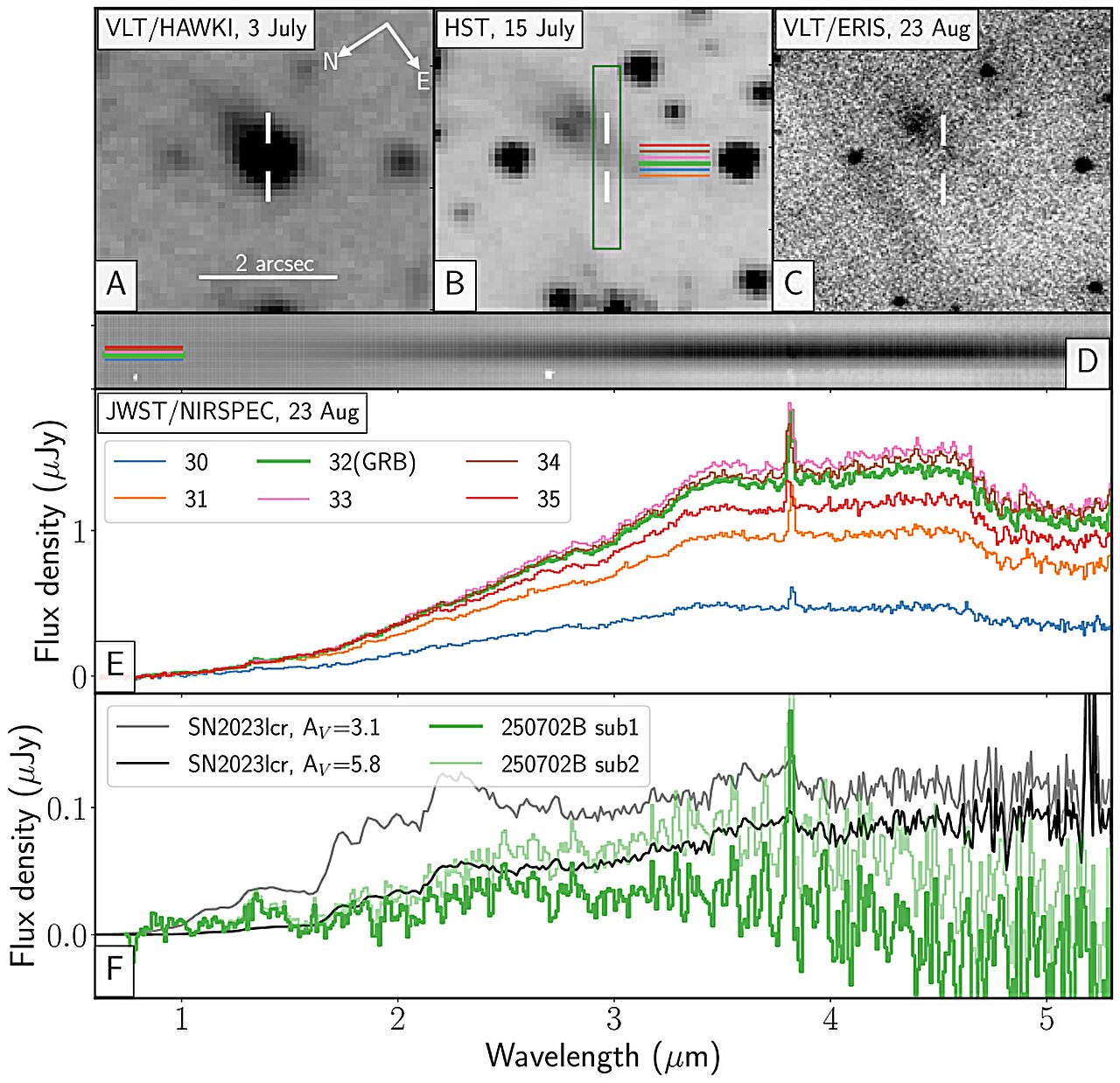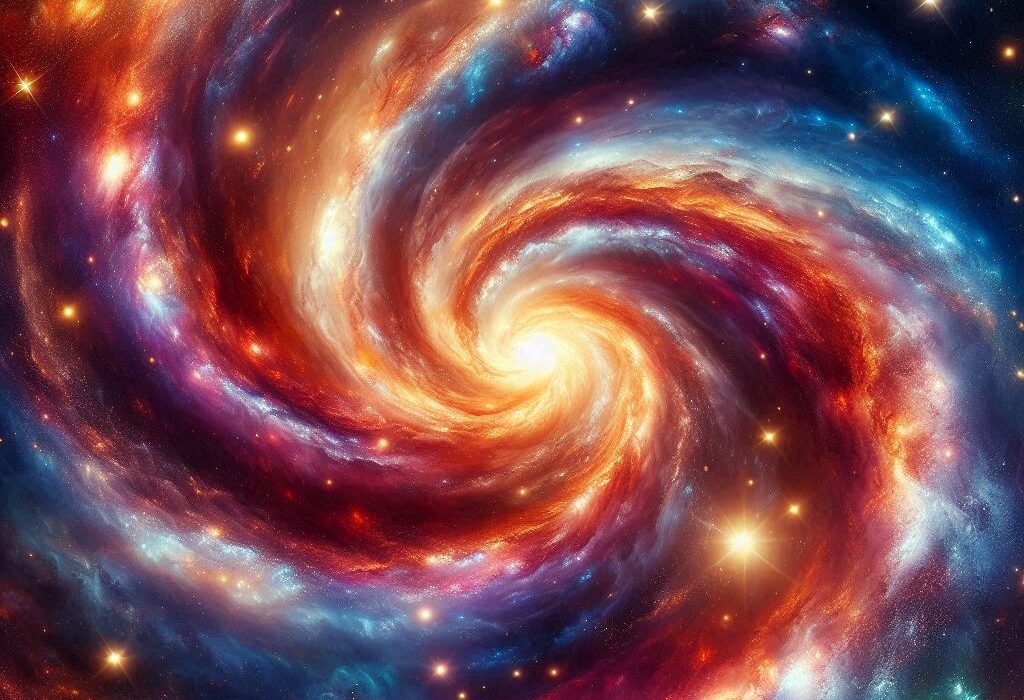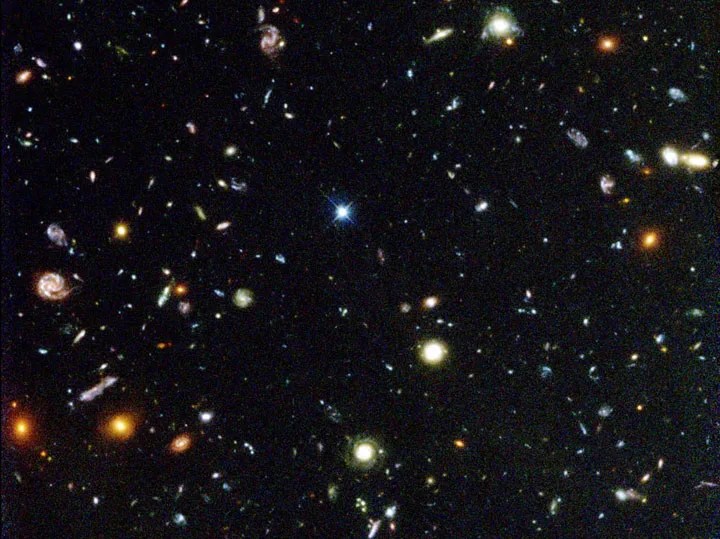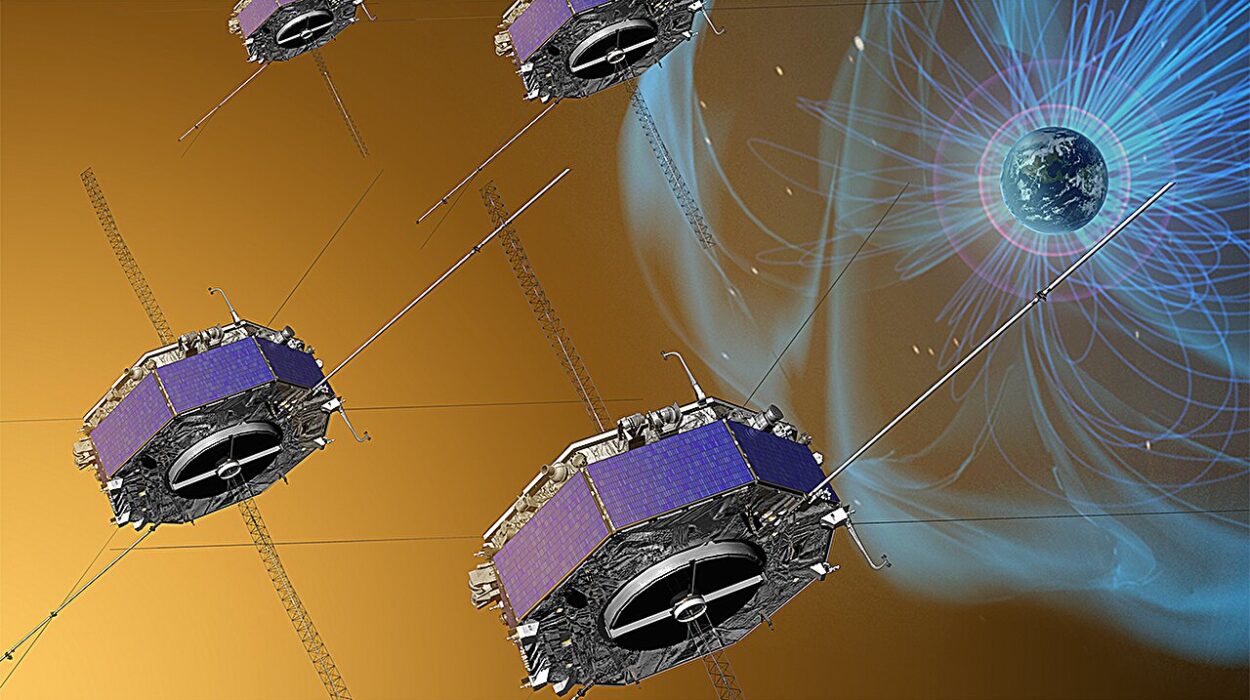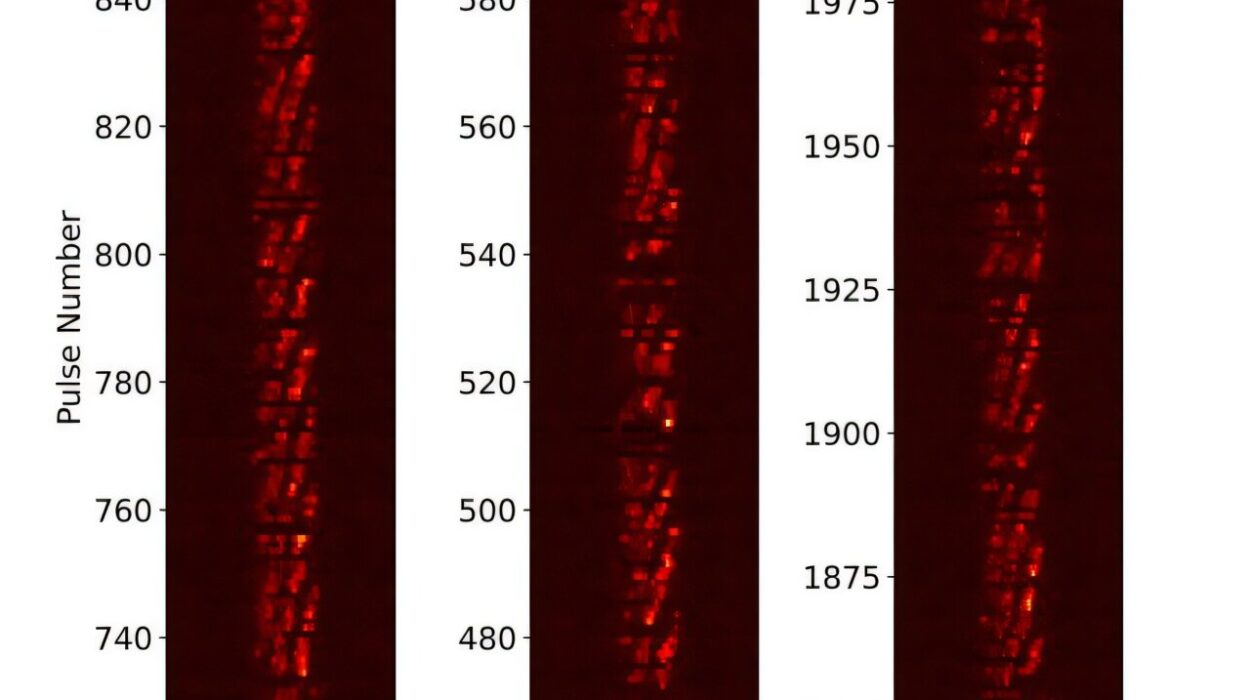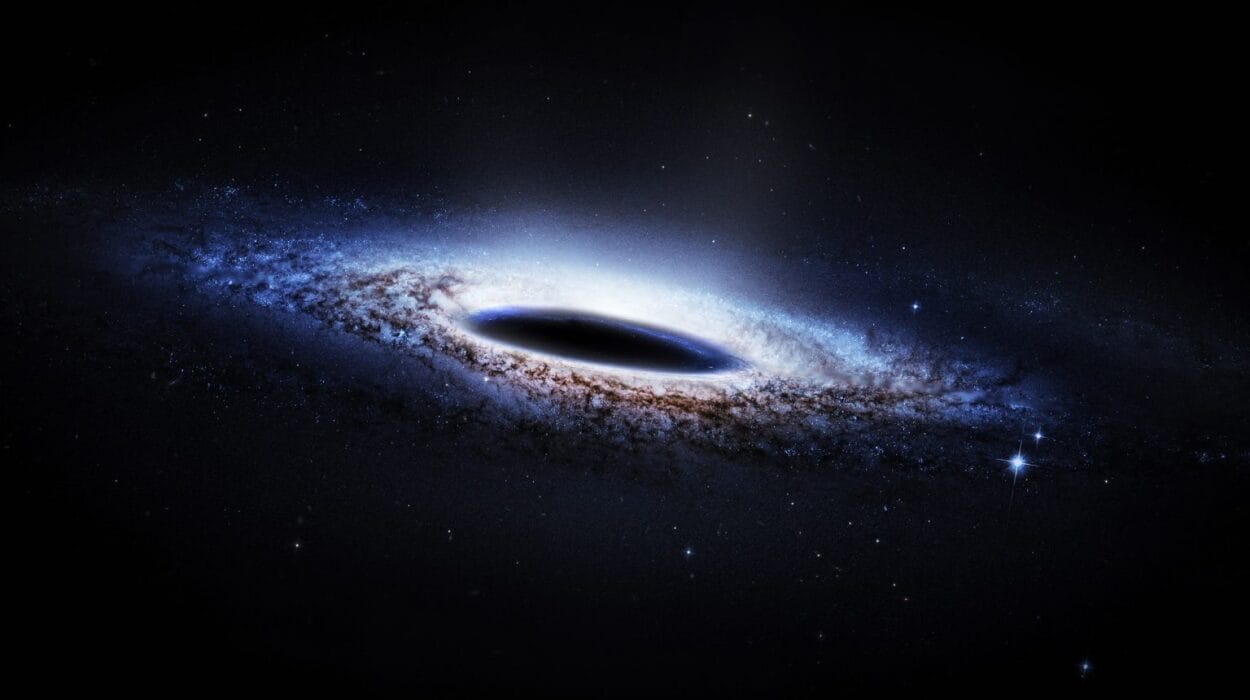The universe, vast and ancient beyond imagination, still finds ways to astonish us. For every new telescope we build, every corner of the cosmos we peer into, space always seems to hold something we’ve never seen before—something that humbles us and reminds us how much we still have to learn.
And recently, astronomers witnessed one such extraordinary event: a cosmic explosion so powerful and so long-lasting that it challenges everything we thought we knew about how stars die. The event, known as GRB 250702B, is not just another gamma-ray burst—it is a record-breaker, a mystery, and a new window into the violent heart of the universe.
The Discovery That Shook Astronomy
On July 2, 2025, NASA’s Fermi Gamma-ray Space Telescope picked up a signal that caught astronomers off guard. It was the unmistakable flash of a gamma-ray burst (GRB)—a short, intense beam of energy unleashed when the universe’s most catastrophic events unfold. Normally, these bursts last for only a few seconds or minutes at most. But this one didn’t fade.
GRB 250702B kept flaring for a full day. That’s twenty-four hours of cosmic fury—an eternity in the world of gamma-ray bursts. Such longevity was unheard of, defying the very physics astronomers thought governed stellar explosions.
This wasn’t supposed to happen. A star only dies once. So what could possibly make a single cosmic blast keep burning for so long?
The Nature of a Cosmic Cataclysm
To understand why this event is so astonishing, it helps to know what a gamma-ray burst is. GRBs are the universe’s most violent explosions—brief, bright flashes of gamma radiation that can outshine entire galaxies. They are typically born from the death of a massive star collapsing into a black hole, or from the collision of two compact objects, like neutron stars or black holes.
When these colossal forces erupt, they hurl beams of high-energy radiation across space. If Earth happens to lie in the path of one of those beams, telescopes like Fermi can detect it.
But even among these cosmic titans, GRB 250702B stands apart. It didn’t fit the mold of any known type of burst. Instead of fading after minutes, it persisted, flickering with renewed intensity for nearly an entire day. It was as though the universe had hit “pause” on one of its greatest explosions, letting us watch in slow motion.
Measuring the Impossible
To unravel this mystery, scientists needed to know how far away the burst occurred. Distance tells astronomers two critical things: how bright the explosion really was, and how much energy it released.
For that, they turned to the James Webb Space Telescope (JWST)—the most powerful eye humanity has ever aimed at the stars. Using JWST’s infrared precision, they located GRB 250702B’s host galaxy and measured its redshift—the stretching of light that reveals how far something lies in the expanding universe.
The results stunned them. GRB 250702B was not only distant, but its energy output was the most extreme ever recorded. It wasn’t merely another gamma-ray burst—it was a cosmic outlier, one that strained even the most robust models scientists had built to explain how stars explode.
As the researchers wrote in their paper, “The associated energy release is enough to strain, but not definitely break, canonical GRB collapsar models.” In other words, this event pushes the limits of what our current understanding can handle.
The Missing Supernova
Most long-duration GRBs are accompanied by a supernova—the spectacular explosion that marks the death of a massive star. When astronomers see a long GRB, they usually expect to find a bright supernova glowing in the aftermath.
But in this case, there was none. Despite careful searches, no bright supernova appeared near GRB 250702B. That deepened the mystery. Could the supernova be there but hidden by thick dust? Or was this an entirely different kind of cosmic event?
The host galaxy offered a clue. It turned out to be unusually large and dusty, unlike the small, young, star-forming galaxies where GRBs typically occur. That dust could easily obscure the faint glow of a supernova, swallowing its light before it ever reached our telescopes.
Still, the galaxy’s unusual properties suggested something more profound. The environment itself might have played a role in shaping this extraordinary event.
A Star’s Last Breath—or a Black Hole’s Feast?
If GRB 250702B wasn’t a normal star’s death, what was it? The researchers proposed two possible explanations, both dramatic in their own right.
One idea is that it was caused by an unusual collapsing star, one that defied conventional models—perhaps spinning faster or possessing an unusual magnetic field. Another possibility is even more exotic: a black hole tearing apart a smaller star in a process known as tidal disruption.
When a black hole devours a star, the shredded remains form a disk of matter that spirals inward, glowing fiercely as it’s consumed. Such an event could, in theory, produce a prolonged and variable burst of energy like GRB 250702B.
If that’s true, this might be the first time astronomers have caught such an event in the act.
The Role of the Cosmic Environment
The location of GRB 250702B offers tantalizing hints. The host galaxy’s size, dust content, and age all make it an odd place for a GRB to occur. Typically, gamma-ray bursts happen in small galaxies teeming with new stars—places where massive, short-lived stars can quickly burn out and explode.
Yet this burst came from a mature, dusty galaxy, suggesting that the environment played an unexpected role. Perhaps the star that caused the burst was old or formed under rare conditions. Or perhaps the dense surroundings altered how the explosion unfolded, stretching its duration far beyond what we’ve ever seen before.
As the research team put it, “The identification of such an exotic GRB in such an unusual galaxy raises the possibility that the environment was important in the progenitor channel creating GRB 250702B.”
In other words, where it happened might be just as important as what happened.
The Afterglow and the Hunt Ahead
Even after the initial explosion faded, GRB 250702B continued to glow faintly—a lingering afterglow of radiation as the expanding shockwave plowed through space. This afterglow is a vital clue. By studying how it dims and changes over time, astronomers can piece together the physics of the explosion and the structure of the surrounding material.
The search isn’t over. Scientists are still looking for the hidden supernova, possibly buried beneath layers of cosmic dust. Long-term monitoring of the afterglow, using both space-based and ground-based telescopes, will help reveal whether this was truly a new kind of stellar death or a black hole feeding frenzy unlike any other.
Redefining How Stars Die
If confirmed, GRB 250702B could reshape our understanding of stellar evolution. It might reveal that some stars die in ways we’ve never imagined—slowly, violently, and with a power that defies our models.
It’s a humbling reminder that the cosmos doesn’t always follow our rules. For every theory we build, the universe offers a counterexample, challenging us to think bigger, look deeper, and never assume we’ve seen it all.
The story of GRB 250702B is still being written, but one thing is certain: this event will echo through the field of astrophysics for years to come.
The Beauty of the Unknown
In the end, what makes discoveries like GRB 250702B so thrilling is not just their scientific importance—it’s their reminder of wonder. Somewhere, billions of light-years away, a star (or something like it) lived, died, and left behind a cosmic signature so immense that it crossed the universe to reach our telescopes.
For a brief moment, our planet caught that ancient light—a whisper from the universe’s deepest past—and we listened.
Astronomy is, at its heart, an act of curiosity. Every burst, every flicker, every distant glow is a message from the cosmos inviting us to understand it. GRB 250702B is one such message, one that tells us the universe is still full of surprises, still alive with mysteries waiting to be uncovered.
And as long as we keep looking up, we’ll keep finding them.
More information: Benjamin P. Gompertz et al, JWST Spectroscopy of GRB 250702B: An Extremely Rare and Exceptionally Energetic Burst in a Dusty, Massive Galaxy at z=1.036, arXiv (2025). DOI: 10.48550/arxiv.2509.22778
